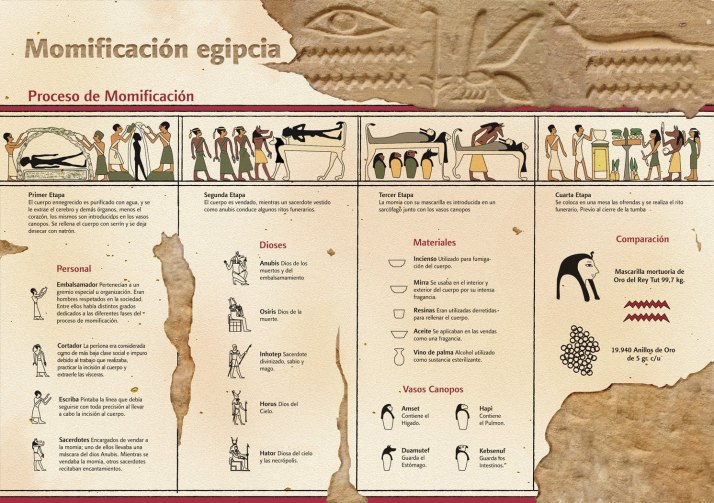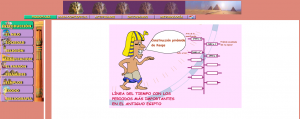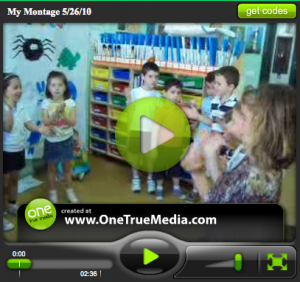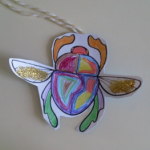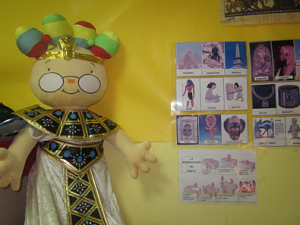Los egipcios
Reading Los mellizos del tiempo got me thinking about integrating language learning in the Primary curriculum. As I mentioned in my previous post, it links so well with the ‘topic’ of Egyptians, or under the ‘learning journey’ of Treasure taken in Year 4 at WCPS. So I had a bit of a look around and came up with the following ideas, resources and links that might be of use to anyone who wants to do just that!
General information
Egipto para niños – collection of fairly simple texts on a number of areas of Egyptian life including the Pyramids, food, manners and mummies as well as a bit of geography. This text is in fairly short chunks too. And Blog de los Niños has some short chunks of information, particularly about Egyptian gods and the meanings of the various crowns.
Here are some longer texts about various Egyptian ‘misterios’ including the Mummy of Pyramid KV22.
Historia Simple has some short-ish historical summaries of the various phases of the 2500 year long Egyptian era including a section on the Pyramids. There’s also some information on El Historiador.
And of course there’s Wikipedia – you can translate the pages back and forth between languages so you could have some fun with picking out key items of vocabulary.
Slideshare has some presentations for ideas and information including this lovely one from some young learners which is beautifully simple and asks some good questions on slide 4 that could be used for investigation.
And this blog has two simple presentations by Dora la Exploradora and friends, and Hello Kitty covering some of the basics of Egyptian geography and history in words and image.
However, my favourite find is from Junta de Andalucia. This site is a one stop shop about Egyptians, written in simple language and presented in short paragraphs with lots of visuals, making it really accessible. There is a dictionary of key terms as well as the facility to click on highlighted words for an immediate ‘pop up’ definition. Lots of interactive maps and also a hieroglyphics maker within the site also make it a great place for young learners to find out about Egypt. There’s also a webquest that guides learners through the site, posing questions that can be explored and investigated. (There’s another more complex webquest here along with other Egyptian resources shared on the Tiching site.)
A close second goes to a resource from Gobierno de Canarias that takes an interactive look at the Pyramids with extra information, again simply presented, appearing as you click on specific areas of the pyramid.
Videos
Videos are another source of information that can often be more accesible than just text.
Here are a few information videos:
Egipto, Documental sobre una civilización – this one is quite complex but has good information. From the same people, there are videos about specifics like Los pirámides and Las tumbas egipcias which are shorter.
And then there are these cartoons, the first from a series called Érase una vez.. and the second from a series called Martín Martín.
And here’s another I’ve just found which is a short video about the Egyptian pyramids:
You might also like to try the Barrio Sésamo approach with this video in which Lola visits the Pyramids or this video which presents images and name of the animals of Egypt before moving on to images of buildings and then some short snippets of information about Egyptian life.
Songs
You know how I love a good kitschy song! Here’s one called Momias de colores by Rockolate. When my hand is feeling better, I might try to subtitle the video using Amara or at least write them down!
Great for an assembly perhaps?
httpv://youtu.be/VkFxB8MbLs0
And then there’s El rap del Faraón Kamon
You can listen here and also access the sound file and lyrics here.
(see also Fátima una momia responsable below under Stories for another song)
“Literacy” ideas
(see also Stories below!)
Perhaps with older, more advanced learners you could use some of the definitions from this ‘Glosario’ for a match the word to the definition. You could choose key words like Faraon, Esfinge, Obelisco, Momia, Papiro, Sarcófagos, Vasos canopos and so on.
And this vocabulary list gives you the Spanish word with the Arabic equivalent. Could provide an interesting language comparison activity.
And here’s an online hieroglyphics tool. Would be fun to write some words in hieroglyphics and ask learners to decode before they write their names. Or they could write key Egyptian vocabulary in hieroglyphics for display as well as in Spanish for a multi lingual display!
Maths ideas
The Egyptian system of counting and adding etc was very developed and you can find out all about it here (in more detail than I think I need to know but if you like Maths…)
This site has lots of writing at the top (useful information!) but the really ‘useful’ part for learners is the chart with the Egyptian number glyphs and the puzzles underneath, both for whole numbers and also for fractions. I foresee lots of fun with setting maths problems for each other… There are a few more maths problems here.
A document explaining that Egyptian numbers are not positional so you can write the units, tens, hundreds etc in any order! Un sistema aditivo – el egipcio
And of course there are all sorts of things you can do at a very simple level such as sequencing and using geometrical shapes when making Egyptian jewellery, and making pyramids.

Stories
I found this free video story about Egypt called El pendiente de la princess: Cuento de Egipto. Sadly it doesn’t go full screen but the man telling the story speaks clearly and fairly slowly so it could be used for a true/false activity or perhaps a multiple choice activity.
However, I found two more promising possibilities!
Rita y los ladrones de tumba
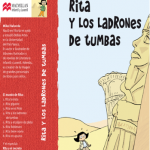 I also found some activities to accompany a book called Rita y los ladrones de tumba.
I also found some activities to accompany a book called Rita y los ladrones de tumba.
1. If you purchase the book (Amazon, Casa de los libros, Barnes and Noble), you can read it in 3D via Rita’s own website – watch this video to see how! Want to know if it’s a good book? Here’s a video book review on by Helena who’s read it!
2. This PDF (rita_ladrones) has links to useful sites (some I’d already highlighted above before I found this!) and also some activity worksheets. Whilst the middle sheet on characters in the book would be hard without reading it, the first sheet (matching words with images and writing your name in hieroglyphics) needs no knowledge of the book, and I think that the third sheet which is a sequencing activity could also be done without reading the story, and actually gives a very simple synopsis of what happens!
3.Then I discovered that there is an online version of the CD rom of activities about the book, complete with Teachers Notes (in Spanish!) There are various activities including finding synonyms and antonyms, sequencing text and a wordsearch – see below image for contents. Some activities are quite challenging for primary learners; however, a bit of challenge can be a good thing!
Fátima, una momia muy responsable
Fátima una momia muy responsable is a lovely story about an Egyptian mummy called Fátima who wants to be a tour guide and keeps scaring people! She builds up a great collection of hats and torches by doing it, but one day…
It’s a narrated version of a book that has been used in many Spanish primary schools.
httpv://youtu.be/On5fNWq9N8w
Some ideas for using the story –
- act out the story
- talk about colours and sizes describing the hats that Fátima collected / was gifted
- pretend to be Fátima and give a tour of a pyramid
- one of the class blogs I discovered had a song on it about how Fátima dances which would be great fun, whatever your age! You can access the words here or here, and here is a recording of young learners singing it!
Activities
Some fun puzzles and colouring sheets from Yodibujo based on Egyptian art and gods and goddesses.
There are more colouring activities in El Sarcófago de las diversiones.
There are lots of activities on Educaplay – I think that the Mapas Interactivos are particular useful; for example, here, here and here.
How to make Los escarabajos de la suerte
Ideas from other schools
I love ‘being a magpie’ and collecting ideas, and here are some classes in Spanish primaries that have done an Egyptian topic and shared their ideas.
Mis cosillas de Educación Infantil – this link takes you to the posts for the entire project. I particularly like the concept map that they made which includes lots of important vocabulary organised systematically. I think that having a map of what is already known that is added to as time passes and more information is gathered is a great way of documenting learning and progress, especially if learners post questions that they’d like to investigate and see them answered as they explore and investigate!
E.I. 5 años Carlos Ruiz have been doing an Egyptian topic too and this is the first of a number of posts on what they have done. If look in the archive, there are further posts documenting their work throughout noviembre and diciembre 2012 including the sequencing activity referenced in the Maths section above and an interesting post giving instructions on making ‘papiros’.
La Clase de la Bruja Maruja have done a project on Egyptians too and have published some of their work as well as links on their blog. Of particular use I think are the simple worksheets they used that could easily be used in the primary language classroom. I also love the fact that they’ve been using the wonderful Woodlands site by Mandy Barrow using GoogleTranslate to put it into Spanish!
LaEduteca’s post on La Máquina del Tiempo is also very helpful, especially the ‘láminas’ used in the topic.
And the Egiptologia site has a number of resources from schools in their Trabajos en colegios e instituciones section as well as Tus trabajos escolares. Lots of the resources are written by students making them suitable for learners to access themselves as well for use by teachers as information sources and inspiration!
So, I hope you’ve find the above useful. I know that there are many more things that could be done; for example, I haven’t even started on the possibilities for art projects! If you have any ideas or resources, please leave a comment – it’s good to share! And even if you haven’t, leave a comment! Its good to know that people are reading!
1 thought on “Los egipcios”
-
Pingback: Así eran los romanos (Sabelotodo) « ¡Vámonos!
